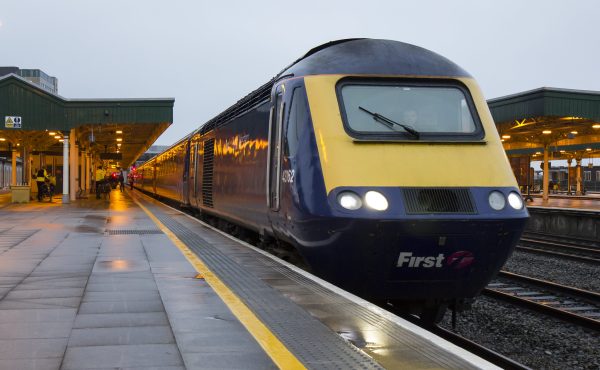What would our city look like in a world that had gone beyond fossil fuels? It’s an important question, for if we can’t paint a picture of the future we want we’re not likely to get it.
Oddly enough, it’s not a question that many people have tried to answer. Most of the thinking on alternative energy has focused on the cool technology, rather than the urban spaces it would inhabit or the social relations that would underpin it. The debate on public space, on the other hand, has largely ignored where our energy will come from (as a case in point, this blog doesn’t even have a tag for it). Meanwhile, the best sci-fi writers are much better at dystopias — at least when dealing with the near future.
But it is a question that we are going to have to answer if we are to avoid the darker futures of a world ravaged by climate change envisaged by some of my favourite authors.
The Living Planet City is as an attempt to start answering that question, in a way that is (hopefully) more fun and accessible than the various technical reports I and other environmentalists have released over the years.
And thanks to the cleverness of the internet we can not only paint an picture of the future we want, but can also back up each click-able part of that picture with a thousand words of text and even more pictures of real-life climate solutions being implemented in Canadian cities, including Toronto.
A big part of that picture will be about bringing energy production home, into the spaces where we live, work and play. We’re going to have to grow out of being simply consumers of energy (although will have to more efficient in using the energy we do consume) and become energy producers. Our homes, office towers and factories will all generate at least some of the energy they use from renewable energy sources like the wind, sun, water and earth; that energy will also power our fantastic systems of light-rail transit and plug-in hybrid cars, while freeing up space for bikes and pedestrians.
What is interesting about Toronto’s strategy is that many of the major elements — Tower Renewal, Transit City, the leadership role being played by Toronto Community Housing Corporation — will improve the quality of life for low income and marginalized communities. Done right, greening the city can also help knit a stronger social fabric.
It’s not going to be an easy transition — as evidenced in the response to the proposal for an off-shore windfarm in Scarborough. Energy production has been out-of-sight and out-of -mind for far too long, and it would be a lot easier to keep it that way but the planet just can’t bear the cost. If we want to stop the tar sands, we’re going to have to break our urban areas’ addiction to oil.
We’re now looking for people to comment on this vision, and share it with their friends (and their elected representatives). Because — as I hope this little website helps illustrate — a better world is not only possible, she is on her way.





10 comments
This is all great stuff but we’re so incapable of realising any of it. Philip Preville proposed vacuum garbage collection in the new Portlands districts as in Copenhagen – taking huge trucks off residential streets – and the Mayor couldn’t shoot the idea down fast enough. What chance for a city like the one above if we can’t get the smallest ideas off the ground?
I’m not quite as cynical as Mark! (smile)
But…
Does anyone have the updates for Tower Renewal that were promised six months ago? They’re aren’t on the Tower Renewal website. No concept plans or finance plans etc.
**
More to the topic at hand, I think the simulation is nice, but I’m concerned that its so ‘big picture’ that it tells people about a lot of thing they can’t or won’t influence.
The average person doesn’t perceive that they can affect (for good or bad) the creation of new wind turbines, or biogas plants etc. etc.
Even the average business may suffer from glazed over eyes with the “And what am I supposed to do” look.
I think its important to cite clear simple examples, as was done with CFL bulbs, or planting trees, because people not only easily understand these, they are affordable and easy to implement.
I think it would be useful (though don’t ask me how) to include micro-picture messaging, like…
Hook up the computer or other electronics to a power bar (assuming the wall plug has no switch) and make sure to turn it off to eliminate stand-by power consumption when things aren’t in use.
Lighting remains an easy issue, apartment complexes in particular have hall lights that run 24/7 even if no one passes through the hall for 4 hours straight. That wastefulness can be avoided by motion detectors, or timer-based lights or some combination thereof. Not fancy technology, easy to implement.
I didn’t notice is solar-thermal (water heating) was highlighted, its very cheap, and easy to implement as well.
Overall very good idea.
I took a look at the website and thought that I was going to see a “green” city of the future. What a disappointment. What I saw was a car-centric automobile city of the past with lots of greenwashing.
Today, if I go to Groningen or virtually any other medium to large city in The Netherlands, I can see a non-car-oriented city. These cities look a lot different than the car-centered Living Planet City (LPC).
The biggest difference is that in Dutch cities, I can’t go everywhere in an automobile. In the LPC I can. In Dutch cities, the city centre is usually forbidden to cars entirely, or else there are serious restrictions upon them. Cyclists and pedestrians flourish.
In the LPC, cars go everywhere, intimidating cyclists and pedestrians as they go. And use up vast amounts of public space in roads and parking lots.
Many Dutch cities don’t just ban cars from the city centre. If I live in a residential neighbourhood, there is usually only one way that I can drive a car – straight out to peripheral ring roads. If I want to go to another neighbourhood in a car, I have to go all the way out to a peripheral ring road, drive around the city, and then drive back in to my destination.
Pedestrians and cyclists, unlike cars, can go straight from point A to point B anywhere in the city. Result: People walk and ride bicycles, not cars.
This is why in Groningen today, 57% of all travel is on bicycles.
The Living Planet City is a car-culture car-oriented car-centered city in which the car is king. Cars go everywhere in the LPC. It is just a greenwashed monument to car culture.
I’ll take a real life Dutch city, like Groningen. A real city where I can go to today and see 57% of all travel by people on bicycles.
I do not want Toronto to be a car city like the Living Planet City. I want Toronto to be a city for people, not cars. Just like Groningen.
For more details of how Groningen tamed its cars, see:
http://hembrow.blogspot.com/2009/02/how-groningen-grew-to-be-worlds-number.html
Kevin:
I think it’s partially a question of time-scales (although I would note there are as many bikes as cars on the road).
Medieval cities like Groningen were built before cars, whereas ours were built for cars. Urban form changes only over decades, unless we start bulldozing people’s homes (personally, I’m not a big fan of that strategy), and we were thinking about a decade out. As an able-bodied, young-ish person living in downtown Toronto, I get by fine without a car and can haul my kid off to get groceries in his bike trailer. There are people (e.g. my mom) for whom and places (suburbs)where that’s a lot harder.
So we put in some funky new zero-energy buildings, some of what I think of as urban infill townhouses, wrapped the towers, and started fuel-switching the (fewer) cars and (better) public transit system over to electricity from renewable sources.
Keith your SimCity pic of a sustainable city should have urban railways ie streetcars or LRT instead of roads.
It’s a little known fact that a SimCity built without roads and using only streetcars has way better quality of life, lower pollution, & better community interaction that any similar city with cars.
RapidTransitMan:
I should clarify – we weren’t trying to imagine building a green city from scratch (as in SimCity), but re-building existing Canadian cities to be green. So we’re stuck with the existing road network and will have to re-make it over time.
Otherwise I would have gone with streetcars / bike lanes from the get-go.
The biggest greenwashing that I noticed was the big-box supermarket, which has now become the big-box supermarket plus wind turbine! Woo hoo, all your sins are forgiven. This is like the Milton Loblaws that is being hailed as saving the planet because they don’t give out plastic bags and because 12 out of the 500 to 1000 parking spaces are reserved for hybrid cars.
Keith,
Groningen was a quite small city before 1964, and the medieval part was fairly comprehensively destroyed in the Battle of Groningen, April 13-16 1945.
Toronto connection: Two Toronto Militia units fought in the Battle of Groningen. They were The Toronto Scottish Regiment and The Royal Regiment of Canada.
As shown in the link in my previous post, Groningen today was essentially built in the post 1964 period. Built to be a city for people, not cars.
how about truly dreaming? What about a Bloor/Danforth bikeway?
The problem of today’s world is simply to spot where does image building starts, and actual & factual alternatives to energy production ends. Everyday there s on the newspapers and television new and innovative ideas and propositions from companies and governments towards the reduction of our energy consumption. Do we see any actually being placed into action?Some, but still these are not enough as we are walking to a world were our blindness from today will result in an literal blindness on our future. Thanks for the post Keith.